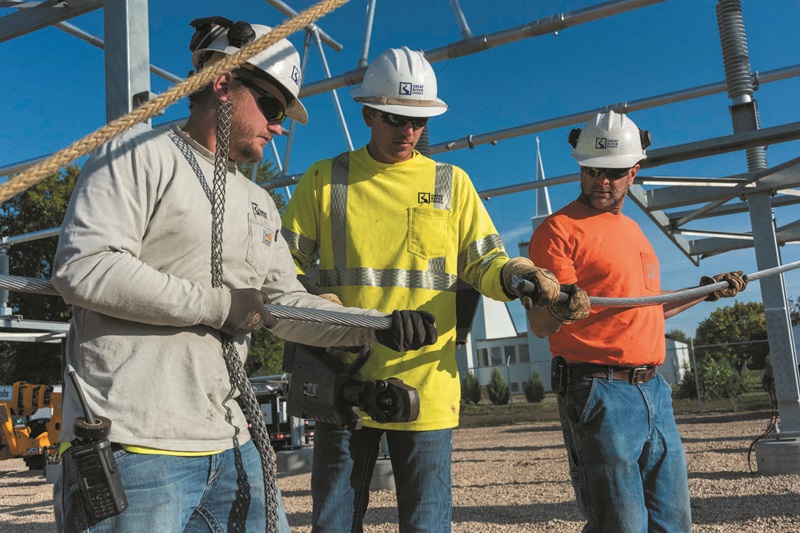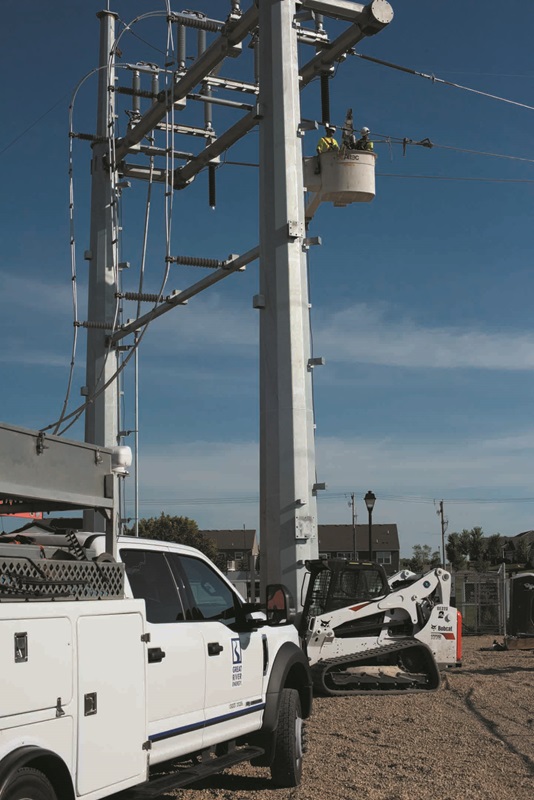National Lineworker Appreciation Day recognizes the essential workers who maintain the electric grid
You probably don’t think about them until your power goes out, but electric lineworkers protect homes and communities 24 hours a day. Like other first responders who keep people safe, lineworkers endure all kinds of weather and challenging conditions.

Great River Energy celebrates Lineworker Appreciation Day in April to honor the men and women who power life, including the 35 line technicians who help maintain reliable electric service for its 27 member-owner cooperatives. These lineworkers maintain and operate 5,771 miles of high-voltage power lines and 109 substations in Minnesota and North Dakota.
“Our line technicians play a critical role in keeping the power flowing in our region and getting the lights back on when storms strike,” said Matt Reule, manager of transmission construction and maintenance at Great River Energy. “They are some of the most dedicated employees we have and can be called on to restore power at a moment’s notice, any time day or night.”
Reule said for these reasons, Great River Energy’s line technicians, as well as line technicians from Great River Energy’s 27 member-owner cooperatives, “truly deserve this special day of recognition.”
Here are some quick facts about lineworkers and the work they do.
Lineworker history
Lineworkers first appeared during the 1840s rush to spread telegraph service across the United States, stringing wires between trees and other natural objects. It didn’t take long for everyone to realize tall poles were safer and more practical.
What lineworkers do
Restoring electricity after a power outage is just one of the many duties of lineworkers, who also:
- Install and connect new power lines to homes and businesses
- Maintain and perform upgrades to improve the electric grid
- Diagnose and pinpoint power delivery issues
- Plan and manage large-scale projects
- Ensure safe work practices in often challenging conditions
Lineworkers are responsible for maintaining and upgrading the nation’s electric grid that connects more than 7,300 power plants to 145 million consumers through 60,000 miles of high-voltage lines, millions of miles of distribution lines and more than 50 million transformers.

Geared for safety
Lineworkers climb with up to 40 pounds of safety gear and tools. Here’s what they typically wear to stay safe while working:
- Hard hats
- Safety glasses
- Flame-resistant clothing
- Arc flash protective clothes
- Rubber gloves and sleeves
- Climbing belts
- Fall-protection harnesses
On-the-job training
The Department of Energy describes the position of lineworker as one of the nation’s highest-paid professions that doesn’t demand postsecondary education. Becoming a journeyman lineworker typically requires a high school diploma or equivalent, training and a paid apprenticeship, which typically spans four years. Apprentice lineworkers receive hands-on training and experience in the field before advancing to “journeyman” status. Lineworker salaries range from $40,000 to $144,000, depending on location, skillset and experience.
Inspiring safety
Roughly 60,000 lineworkers hit the road annually to respond to devastating storms and the damage they leave behind. In addition to extreme weather exposure, lineworkers face a variety of dangers, including electric shock, falls from elevated work locations and roadside traffic accidents. High injury rates among early lineworkers led to the creation of apprenticeship programs and organized labor throughout industry.
Safety is always the No. 1 priority, which is why lineworkers continuously receive training to stay mindful of safety requirements and up to date on the latest equipment and procedures.
Lineworkers power modern life. This April, join Great River Energy in thanking them for the essential work they do.
 " data-object-fit="cover">
" data-object-fit="cover">
 " data-object-fit="cover">
" data-object-fit="cover">